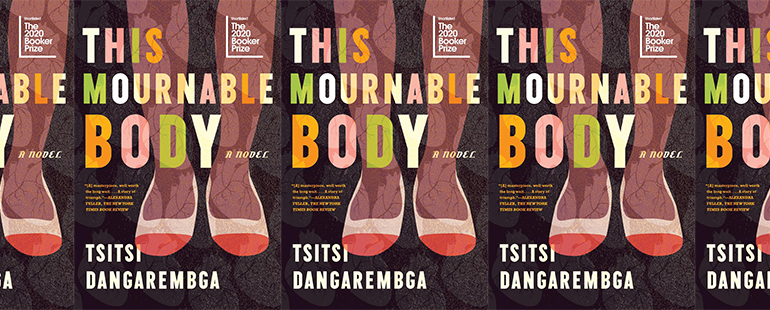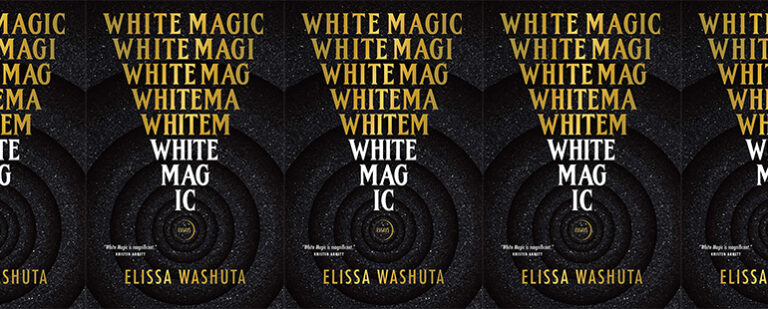This Mournable Body’s Unrelenting “You”

The titular bodies of Tsitsi Dangarembga’s This Mournable Body are five-fold (at least): “this” body is protagonist Tambudzai’s body, which Dangarembga has been writing on and off for thirty years; it is Zimbabwe’s national body, first appearing in Dangarembga’s fiction as the colony of Rhodesia and then as an independent state; it is the body of the postcolonial subject, generally; it is the literal bodies of Zimbabwe’s bloody war; and it is also, as the novel’s point of view shifts from Tambu’s narrating “I” to the imperative, incriminating, accusatory “you,” the reader’s body. Your body.
“You do not shrink back as one mind in your head wishes,” you read, in an early scene that thrums with the potential for violence. “Instead you obey the other, push forward.” A woman you have just recognized as your hostel mate lies on the ground in a combi station. A workman has ripped off her skirt and the crowd has begun to shout “about holes in her woman’s body.” “You want to see the shape of pain, to trace out its arteries and veins.” You pick up a rock, surge forward. Luckily, this time at least, you also let it drop unused.
Much has been written, since This Mournable Body was first published in the US in 2018 and then nominated for the Booker Prize in 2020, about Dangarembga’s use of the unusual second-person point of view. What has been overlooked is the combination of this second-person perspective with the simple present tense also deployed in her two previous novels, creating, in This Mournable Body, a readerly experience of selfhood and time that does more than the second-person can alone. “You” experience Tambudzai’s decisions as she does, through action, frequently before you are conscious that “you” have made any decision toward action at all. It is a narrative experiment as unsettling as it is compelling, simultaneously implicating the reader in Tambu’s alienation from each of the novel’s implied “bodies” and demanding the reader’s continued participation in that alienation. When “you want to see the shape of pain,” this pain is sometimes “your” own, but it is not yours, really: the body, like the immediate present, is not something you, or Tambu, can ever really share.
Set roughly thirty years after Dangarembga’s first installment of Tambudzai’s story, across a timeline offset from, but also parallel to, its author’s own, This Mournable Body is, from its earliest pages, a novel about personal and national histories. This Tambu is not the same Tambu from Nervous Conditions (1988), who defiantly declared, “I was not sorry when my brother died.” Nor is she the more disillusioned Tambu of The Book of Not (2006), who lost her job, or forfeited it, when being paid less than her white coworkers, especially the white men who were passing off her work as their own, got to be too much and she quit. The Tambu of This Mournable Body is a specter of her previous selves, haunted by and haunting the promise that glowed so brightly when her brother died and she became, as the eldest daughter in a family with no remaining brothers, the only sibling permitted to finish her education. She thrived in those circumstances, but was also compromised by the promise of who, as a result of her education, she might have been, just as the nascent country around her compromised and was compromised by the promise of what it might have but was not permitted, by various and complex circumstances, to become. As your narrative doppelgänger thinks for you of a former combatant she knew before the war: “Christine has that layer under her skin that cuts off her outside from her inside and allows no communication between the person she once believed she could be and the person she has in fact become. . . . The women from the war are like that, a new kind of being no one knew before.” Tambu excelled academically, but managed to secure only mildly interesting work at an advertising agency upon graduation. She left her job there to free herself from gendered and racialized inequality, but found no further work that would let her use her intellect or her skills. Like Christine, she has a mysterious “layer” between who she is and who she thought she would be, but her layer is different from those of the cousins and other family members who lost limbs or even their lives in the war. Hers is less explicit, harder to explain, even for “you”—Tambu—herself.
Restricting the reader tightly to the individual distress of Tambu’s experience, then, This Mournable Body takes Tambu’s self-loathing and dissociation, her relative powerlessness against the relentless progression of time, as its baseline reality. “You did not want all that to happen, nor did anyone else,” you think after the episode at the combi station. “No one wanted it. It is just something that took place like that, like a moment of madness.” The external causes for Tambu’s specific “madness” are numerous. Having left her village to study and eventually move to Harare, only to leave her job at the advertising agency and its accordant income, she ends up with no job, no money, no stable place to live, no way to improve her situation, no friends, and no support system throughout the first half of the novel. And yet what rises to the surface, what “you,” as both Tambu and reader, battle most, is what such “moment[s] of madness” mean for who Tambu is, how she will live, and how she will live with herself. These more individual concerns rise to the surface not because the external factors do not matter—it is clear that they matter immensely—but instead because the fact of those external factors does not change the life “you” have before you. “She really is in a very difficult situation when we first meet her,” Dangarembga confirmed last year in an interview with the London Review of Books. And you are there with her. What else is there to say?
That Tambu is not always, and often not completely, present within that immediate, second-person “you” is therefore one of Dangarembga’s more radical, even revolutionary, narrative feats: Tambu’s recurring detachment emphasizes the artificiality of “your” readerly, narrative identification, but “your” readerly experience of that detachment also becomes, through identification, a version of Tambu’s own. “You” attack a student without knowing or comprehending quite what you are doing—you have to be informed about it later, well after the fact. And then you lose track of your narrated self entirely. “Already one day,” the nurse tells you when you finally comprehend that you have been hospitalized. “It was yesterday when you came. . . . You’re lucky you’re out already. When you came they put you in restraining. Now that you are quiet it seems impossible that you were shouting like that, as if someone was murdering you.” Having effectively dropped Tambu out of herself, Dangarembga’s narrative pushes “you” back from, and out of, the relentless progression of time. And time, of course, keeps going without Tambu and, in a different way, without “you.” The effect is unnerving. The only thing more alarming, after all, than having to live through a difficult and unrelenting present, is losing track of that present and the history that propels both it and “you.”
Tambu’s release from the hospital starts a literal new chapter of her life, one in which she goes to stay with her cousin Nyasha, who has been married, had two children, and returned from a life in Germany since she and Tambu saw each other last. Eventually, Dangarembga’s protagonist gets a job and returns to the village of her birth for the first time in years. There, she faces a final, climactic test of thinking and living beyond the unremitting demands of her—“your”— immediate concerns. It is a test she fails. Crucially, however, the composite “you” of Dangarembga’s text begins slowly, after this late failure and its aftermath, to change. By extension, so does “your” dissociative and gasping experience of narrated time in the body change too. “Your education is not only in your head anymore,” Tambu explains, relaying something Christine has said to her, in the final paragraphs of the text. It “is also in your body, every bit of it, including your heart.” “You” are still Tambu. By these final moments of the novel, however, Tambu is not always “you.” Dangarembga describes her in the second-person perspective in the present tense, but writes of events that have already happened, or relays what—not quite in the future tense—might happen next. Tambu disappears into her own counsel, and into a small but increasingly reliable network of communal and familial relationships. As a result, or as the inverse of this trend, “your” readerly place in the novel, though less psychologically tenuous, gradually also becomes ever less vital, less complicit in how Tambu gets by from one moment to the next.
This evolution represents, as Tambu herself observes, “a small first step toward maintaining your knowledge in the location of which Christine spoke.” “You want [wanted] to see the shape of pain, to trace out its arteries and veins,” but only because that pain was, at the beginning of the novel, already “yours.” Having Tambu step back at the novel’s end, then, from that second-person present, Dangarembga leaves “you,” like her anti-heroic protagonist, to “find,” a way of acting towards what Nyasha calls “the common good,” by finding “the value in . . . looking outside of [our]selves.” But she does so with an important caveat: as Tambu becomes more herself, less that other “yours”—the reader’s—to share, her story reminds you that there is a different unrelenting reality, a different historical context, responsibility, and body waiting for each of us after the end of the book.
“Your” body is only Tambu’s body as long as you keep reading. “Your” present is only Tambu’s present as long as you, and she, embody that narrated experience of time. Respecting the difference of that titular “mournable body,” Dangarembga shows us, is as important as reaching for empathy. It is a challenging, uncompromising, hopeful position for a piece of fiction to take. Who are “you” when you are in your own body? When “you” and Tambu inevitably part ways?


